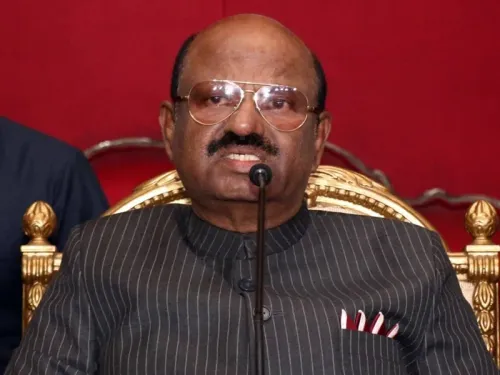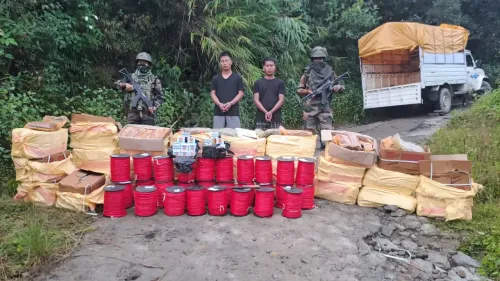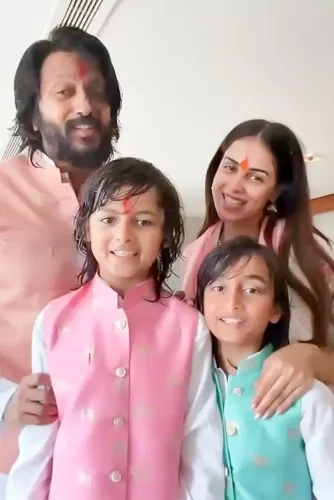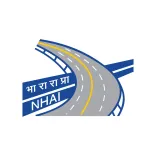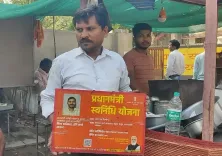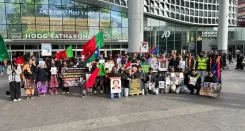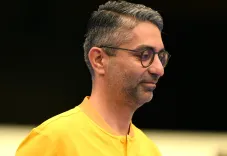How is Govardhan Puja celebrated across India?
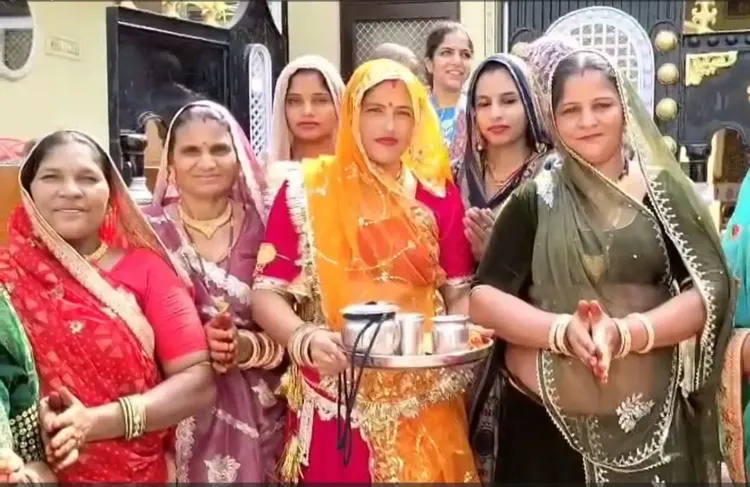
Synopsis
Key Takeaways
- Govardhan Puja is a significant Hindu festival celebrated nationwide.
- It symbolizes the bond between devotees and deities.
- Rituals involve creating cow dung idols and offering Chappan Bhog.
- Families come together to pray for prosperity and happiness.
- The festival highlights India's rich cultural diversity.
New Delhi, Oct 22 (NationPress) Govardhan Puja, a festival deeply embedded in Indian culture and spirituality, was observed nationwide on Wednesday with remarkable enthusiasm and steadfast faith. From the lively regions of Rajasthan to Uttar Pradesh, the essence of devotion brought together millions in celebration.
In Bundi, Rajasthan, the festival coincided with the second day of the grand Deepotsav. Homes radiated not only with lights but also with faith, as families revered Govardhan, symbolizing the mountain lifted by Lord Krishna to safeguard the people of Vrindavan from the fury of Indra, the rain deity. To honor this divine act, women crafted idols of Govardhan from cow dung, adorning them with fruits, flowers, puris, papdis, ghee, milk, curd, and various offerings. These traditional practices were executed with sincere prayers for happiness, peace, and prosperity in their households.
As elders bestowed blessings, devotees encircled the sacred idol, believing that just as Krishna protected the villagers, Govardhan Maharaj would fill their homes with abundance and guard them against hardships.
The spirit of Govardhan Puja was equally vibrant in Deoria, Uttar Pradesh, where the region resonated with devotional songs. Women in traditional garments shaped 'Govardhan Maharaj' and conducted rituals with great care. It is widely held that this puja not only fortifies sibling bonds but also ensures brothers' longevity, making it akin to a second Raksha Bandhan.
The Annakut offering—a mountain of food representing gratitude—was presented with devotion, as women sang auspicious melodies, their voices resonating through generations. In both rural and urban areas, Govardhan Puja remains a living testament to India's rich spiritual heritage.
Moving eastward, the celebration was equally grand at the ISKCON temple in Mecheda, West Bengal. Devotees congregated for a special Annakut Mahotsav and Govardhan Puja. Notable political figure Subhendu Adhikari graced the event by engaging in traditional cow worship and participating in devotional kirtans along with hundreds of others.
In Raebareli, Uttar Pradesh, temples like the Radha Krishna Mandir buzzed with energy. A magnificent idol of Lord Govardhan made from cow dung was embellished with 56 offerings, preserving a tradition that has remained unchanged for years. Devotees flocked to the temple, presenting prayers and food with unwavering devotion.
In Beawar, Rajasthan, the cowherd community upheld a tradition spanning over a millennium—one that has endured through time, colonization, and cultural shifts. On Govardhan Puja, women prepare puri and kheer as offerings, creating a symbolic mountain from cow dung, beautifully adorned with flowers, oil lamps, and vibrant rangolis. Following custom, the men of the community conduct the actual puja.
One captivating ritual in Beawar involves young unmarried men trying to pick up the puri offered as prasad using only their mouths—a task believed to bring them luck in finding a life partner. After the puja, the Govardhan idol is respectfully draped with a cloth. The celebrations officially wrap up on Dev Uthani Ekadashi, when a ceremonial bull signifies the conclusion of festivities, heralding the wedding season.
In Tonk, another town in Rajasthan rich with Nawabi heritage, families also adhered to centuries-old customs. Women crafted replicas of Govardhan using cow dung and earnestly prayed for their family's welfare and prosperity. The collective sentiment across generations stayed consistent: such devotion would invite joy and peace into their homes.
Far from the heartlands of north India, the festival took center stage in Pune, Maharashtra, where thousands of Punekars united for the lively Govardhan Pahat Diwali celebration. Held at the historic Sarasbaug complex, the event commenced as early as 5 a.m., drawing crowds who braved the morning chill to experience a cultural spectacle.
The atmosphere buzzed with performances blending tradition and creativity. The Milap cultural program showcased melodious Hindi and Marathi songs, powerful Mardaani performances, and vibrant folk dances that infused the Diwali morning with energy and emotion. The sky illuminated with colorful fireworks, and the joyous celebration saw attendees exchanging warm Diwali greetings amid tight security managed efficiently by the Pune Police.
The puja represents a significant Hindu festival occurring a day after Diwali. It honors the 'Baal Roop' (child form) of Lord Krishna and is also known as Annakut or Annakoot, meaning “a mountain of food.” On this day, devotees worship Govardhan Parvat (hill) and present 56 varieties of vegetarian food and sweets, referred to as 'Chappan Bhog', as an expression of gratitude and devotion.
This festival embodies the deep bond of faith, protection, and divine grace between deities and devotees. The tale of Govardhan Puja imparts lessons on respecting nature's forces and recognizing our dependence on Mother Nature's blessings. Lord Krishna’s act of lifting the mountain and rescuing the villagers illustrates that bhakti (devotion) is the purest means to connect with the divine.


